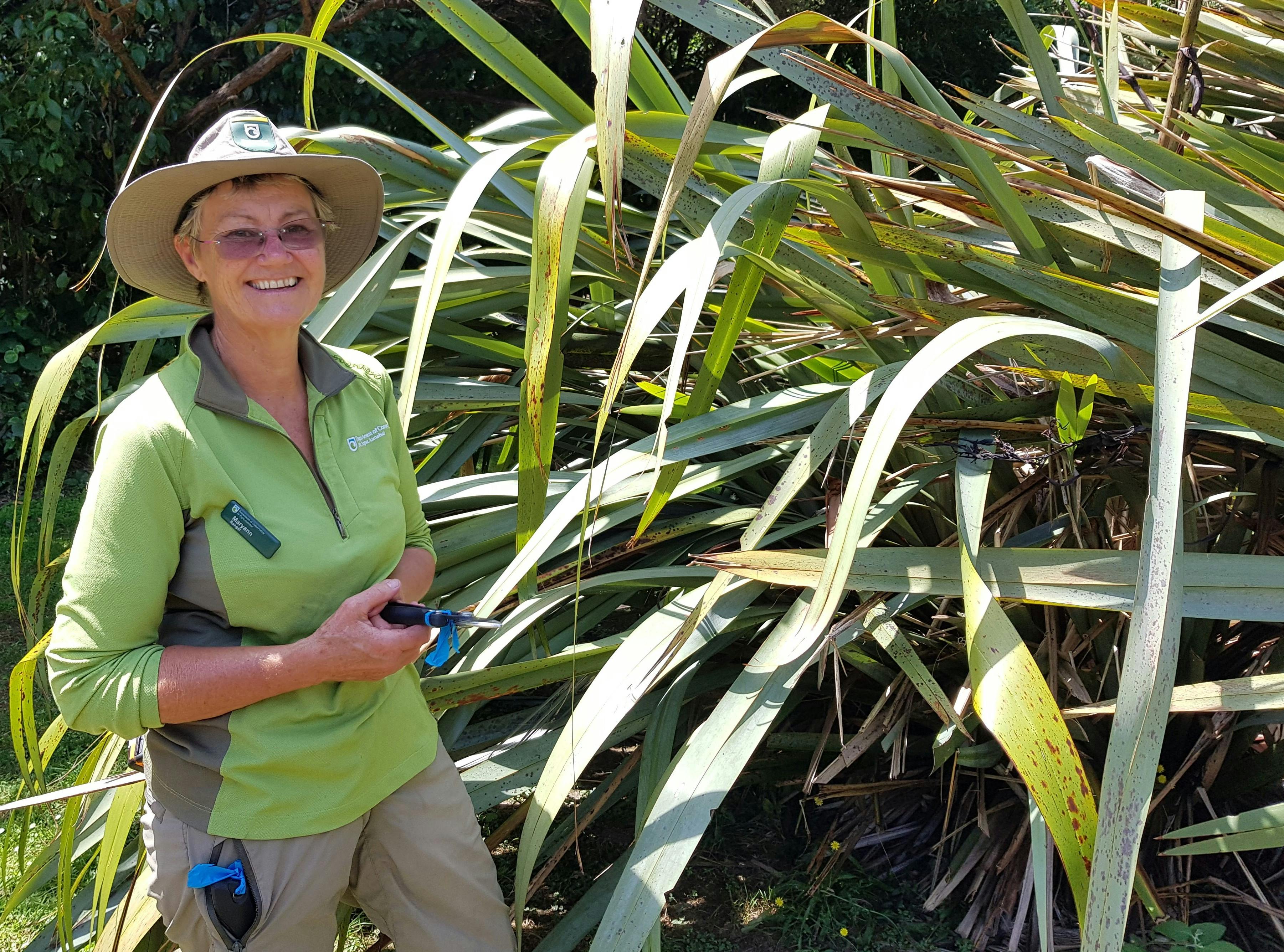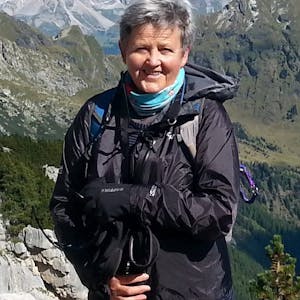Maryann Ewers co-founded the Friends of Flora conservation group to help bring birdsong back to Kahurangi National Park. Kathy Ombler bumped into her at Whariwharangi Hut and took the opportunity to hear her story
They may not know it, but there’s more than a few whio, roroa and other species on the Mt Arthur tablelands of Kahurangi National Park who owe their existence to Maryann Ewers and her conservation-minded colleagues. And as the battle for their survival continues, Ewers remains very much at the forefront.
“Did you hear the dawn chorus, aren’t those bellbirds amazing?” Ewers beamed as she greeted still-sleepy me, sipping coffee outside Whariwharangi Hut at 6.30am. I did, yes they are, and where are you off to so bright and early, I asked back, noting her backpack and boots.
“I’m just popping over to Mutton Cove to do the toilets, I’ll probably see you on the way back,” and off she strode, still smiling about the bellbirds.
This was last January. Maryann had ‘semi-retired’, but someone suggested she apply for the summer ranger role at Whariwharangi and she couldn’t resist.
“I’ve loved it here, and it’s given me a greater appreciation of the work DOC does,” she says.
Twenty years ago, Ewers was more focused on work the cash-strapped department wasn’t doing.
“When Kahurangi National Park was established, in 1996, my partner (Bill Rooke) and I were worried about the effects of increased tourism,” she says. “We had set up a guided walking business, Bush and Beyond, in 1993 and our emphasis was on conservation education. We took bird species counts on every trip, so it meant we could also act as conservation ‘watch dogs’.”
Over 20 years of guiding they made many lasting friendships, she says. Not so great were the bird counts. “In summer 2000 we noticed a massive drop in numbers, in particular in the Mt Arthur Tablelands/Cobb area – our backyard!”
It was a super beech mast event yet, apart from possum control to protect Powelliphanta snails in the Flora Valley, a cash-strapped DOC was doing nothing. Ewers, Rooke and friends decided to take on predator control themselves. Thus pioneering community conservation group, the Friends of Flora (FoF) was born.
The idea of community conservation projects was new then and funding was hard to secure, she recalls “Between family and friends we set up a plan, working in close partnership with DOC Motueka, to protect what we could. Stoats were the major pest.”
That plan grew. FoF now protects some 10,000ha with more than 1200 trap stations. The group encompasses close to 100 volunteers. “On most days, there will be FoF people working somewhere in the mountains.”
Reintroducing whio (blue duck) and roroa (great spotted kiwi) to the Flora area rate among FoF’s greatest successes to date, says Ewers, and regular bird monitoring has been an essential part of the conservation project.
“Our group’s monitoring has provided telling information,” says Ewers. “From the outset, our data showed we were holding on, with some seasonal rises in some species. It wasn’t until the first 1080 drops in the area (in 2013, 2014 and 2016) that we started to see a real difference. Within one breeding season, we witnessed the return of birdsong.”
FoF absolutely supports the use of 1080 and sees its trapping work as a “holding the fort” in between 1080 drops.
“We are out to save our native biota – we don’t have any hidden self-agenda regarding 1080. We wouldn’t support it if we had any evidence it was killing the birds we are trying to protect.”
Ewers has now taken a step back from the FoF ‘frontline’, but continues advocacy work both with the group and for conservation in general. No small part of this is spending time with her grandchildren, teaching them about the natural world.
“At whatever level, it’s all about education, education, education!”








